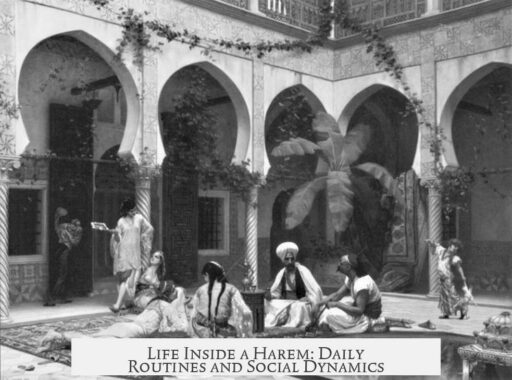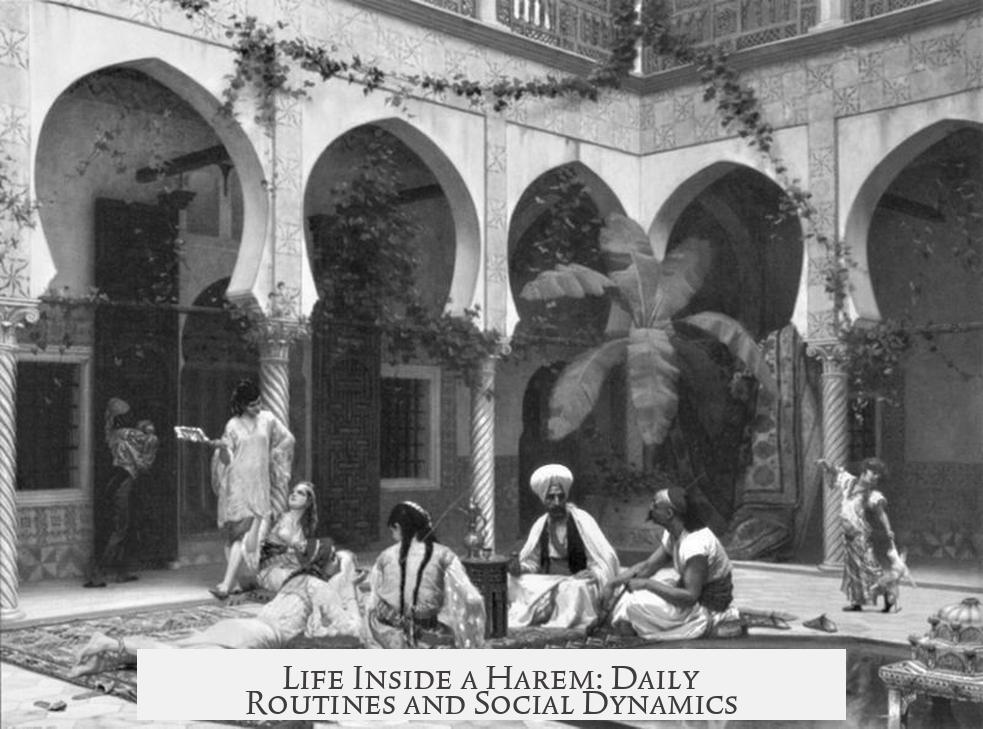Life in a harem involved strict social structure and regulated daily routines within a protected living space reserved for women of the family. The term “harem” comes from the Arabic word ḥaram, meaning a sacred or protected place. In the Ottoman Empire, this space housed the sultan’s mother, sisters, daughters, and their female attendants.
The harem operated under a defined hierarchy. The Vâlide Sultân, or sultan’s mother, held the highest authority. Her status influenced the social ranks of other women. Women closer to the Vâlide received higher pensions and greater privileges. Female slaves served under the imperial family women, mirroring the male slaves serving the sultan.
Daily life centered around education and preparation for future roles. Women learned literacy, religious studies, embroidery, singing, and other practical skills at a palace school. Only a few women, selected with the Vâlide’s approval, became concubines of the sultan. The majority would complete their training and leave the harem through arranged marriages to male members of the royal household.
Movement within the harem was carefully controlled. Women could not leave freely. Their lives were largely confined to the harem’s quarters until marriage. This controlled environment helped maintain order and security within the palace.
Common misconceptions portray the harem as merely a group of concubines owned by one man. In reality, it was a complex institution encompassing the royal family’s women and their attendants. The Ottoman imperial harem was as much about family life and power dynamics as it was about serving the sultan’s needs.
| Aspect | Details |
|---|---|
| Purpose | Housing women of the imperial family and their female slaves |
| Hierarchy | Led by the sultan’s mother, with ranking based on closeness to her |
| Education | Literacy, religion, embroidery, singing, practical skills |
| Restrictions | No freedom to leave until married off |
| Misconceptions | Not just concubines; a family and power center for female members of royalty |
For further insight, Leslie Peirce’s The Imperial Harem and Gülru Necipoğlu’s research provide detailed historical accounts. Online historical discussions also explore personal records and harem life contexts.
- Harems were female living quarters within the royal household, not just collections of concubines.
- Hierarchy was strict and controlled by the sultan’s mother.
- Women received education and prepared for marriage or roles within the palace.
- Freedom of movement was restricted until marriage.
- Harems combined family life, education, and power structures rather than being solely about illicit relations.




